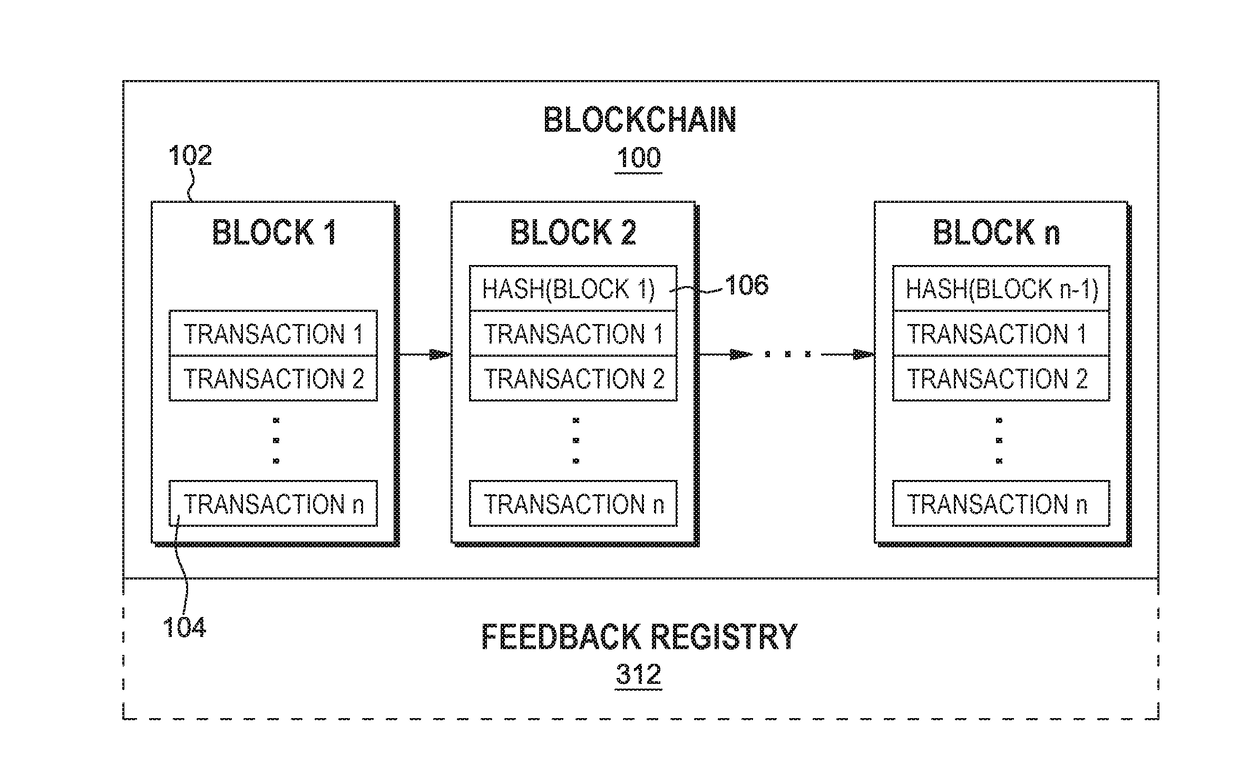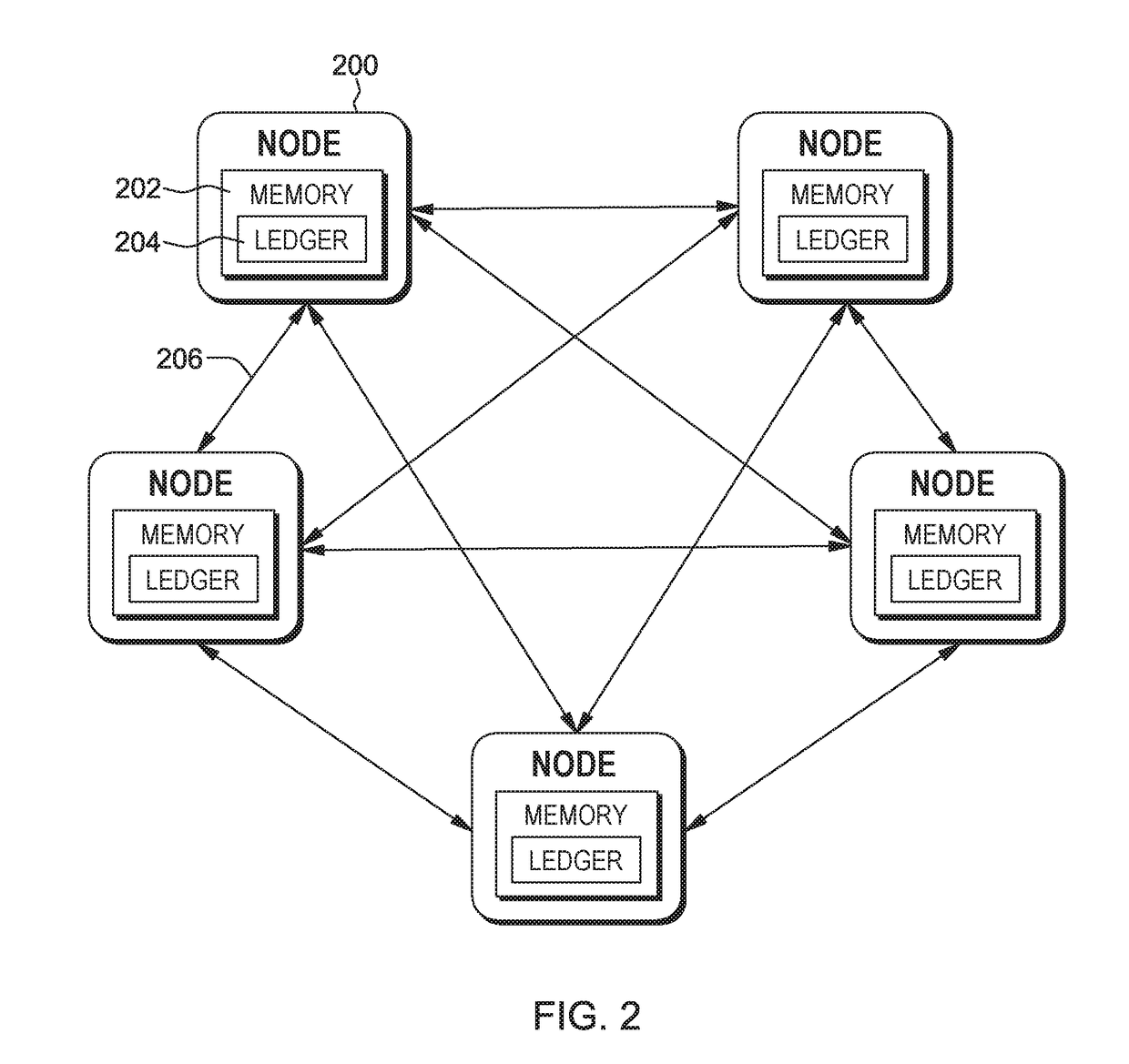Establishing overlay trust consensus for blockchain trust validation system
a trust validation and trust technology, applied in the field of blockchain technologies, can solve problems such as inability to validate transactions, and achieve the effect of ensuring the validity of transactions
- Summary
- Abstract
- Description
- Claims
- Application Information
AI Technical Summary
Benefits of technology
Problems solved by technology
Method used
Image
Examples
Embodiment Construction
[0014]A blockchain relies on validator nodes, sometimes called miners, to validate new transactions that are submitted for addition to the blockchain. Often a blockchain will be implemented by a number of validator nodes run or operated by a variety of different entities or individuals. Depending on the particular blockchain, the number of validator nodes may vary dramatically. For example, a blockchain that has a high throughput, e.g., receives a large number of transactions per second, may be implemented by a large number of validator nodes. As the number of validator nodes increases, the level of trust in the blockchain also increases due to the additional votes during consensus. As the number of validator nodes increases, however, the time that it takes to reach consensus between the validator nodes is also likely to increase which may cause a performance bottleneck. Such a bottleneck may be undesirable as it decreases the blockchain's transaction throughput.
[0015]An increased t...
PUM
 Login to View More
Login to View More Abstract
Description
Claims
Application Information
 Login to View More
Login to View More - R&D
- Intellectual Property
- Life Sciences
- Materials
- Tech Scout
- Unparalleled Data Quality
- Higher Quality Content
- 60% Fewer Hallucinations
Browse by: Latest US Patents, China's latest patents, Technical Efficacy Thesaurus, Application Domain, Technology Topic, Popular Technical Reports.
© 2025 PatSnap. All rights reserved.Legal|Privacy policy|Modern Slavery Act Transparency Statement|Sitemap|About US| Contact US: help@patsnap.com



